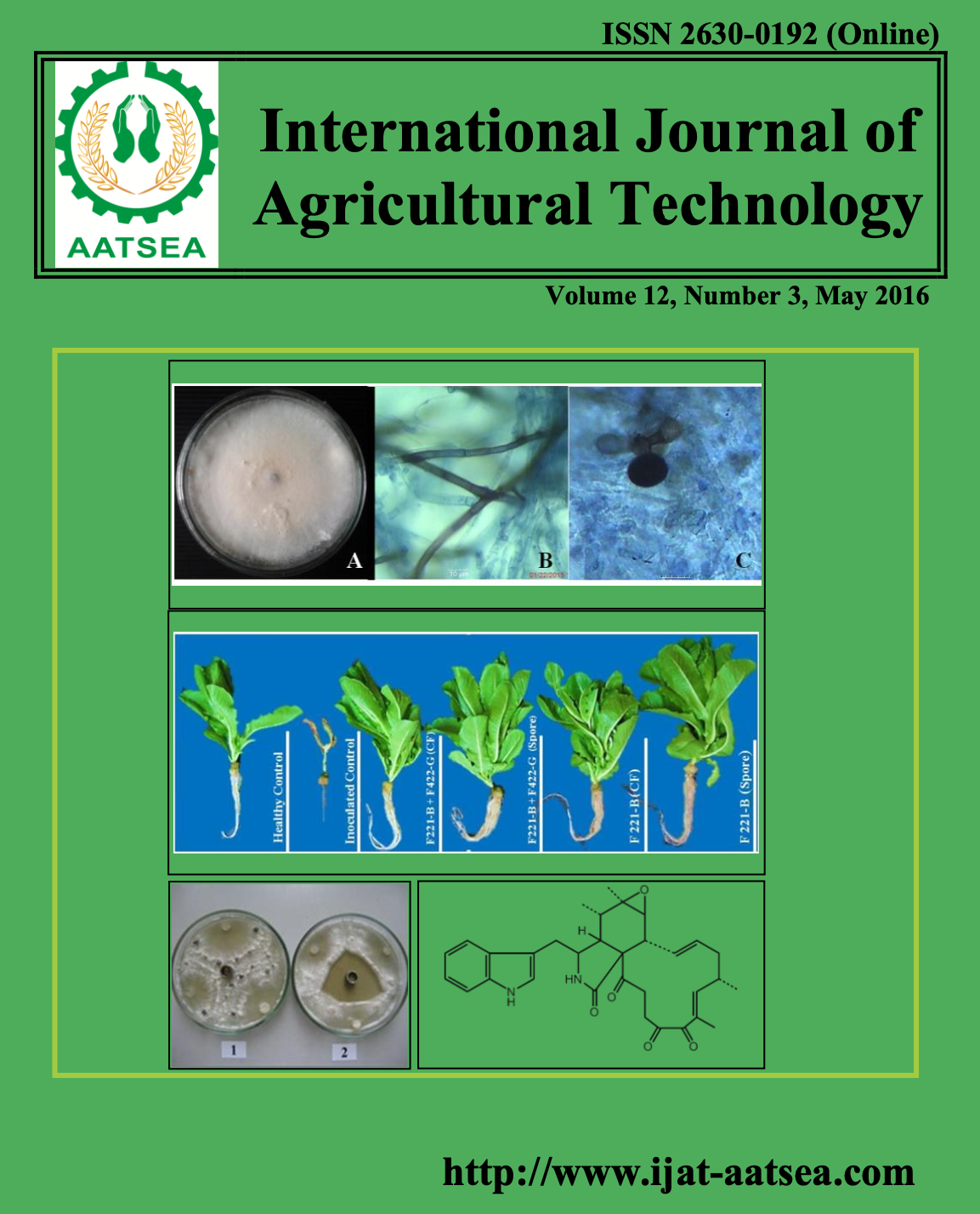The relationship between socioeconomic and food source factors and caloric energy acquired of the coastal artisanal fishing households in Trang province, Southern Thailand
Main Article Content
Abstract
This research aimed to examine the relationship between socioeconomic and food source factors and the caloric energy acquired of the coastal artisanal fishing households in Trang province, southern Thailand. The sample for the study consisted of 240 the coastal artisanal fishing households. The instrument used in the research was a structured interview schedule. The data were analyzed using the Spearman rank correlation coefficient. The results of the study reveal the following: For the socioeconomic factor, the number of members in the household shows a negatively ‘very low’ correlation with an average caloric energy of the coastal artisanal fishing households (r = -.169), while the amount of food consumed per week show a positively ‘very low’ correlation with an average caloric energy of the coastal artisanal fishing households (r = .153). Cash income earned from crops and livestock show a ‘very high’ correlation with an average caloric energy of the coastal artisanal fishing household (r = -.808, r = -.882 respectively); whereas educational level of the household head and cash income earned from fish caught from the sea show no correlation with an average caloric energy of the coastal artisanal fishing households. For the food source factors, the ratio of food from crop cultivation and livestock raising shows a negatively ‘very low’ correlation with an average caloric energy of the coastal artisanal fishing households (r = -.168); whereas the yield of livestock shows a negatively ‘high’ correlation with an average caloric energy of the coastal artisanal fishing households (r = -.776). As for other factors, the proportion of food from nature, market, shop, goods exchange, total production of marine animals, plants, vegetable, including types of aquatic animals, plants, vegetable and livestock show no correlation with an average caloric energy of the coastal artisanal fishing households in Trang province.
Article Details

This work is licensed under a Creative Commons Attribution-NonCommercial-NoDerivatives 4.0 International License.
References
Barrett, C. B. (2010). Measuring food insecurity. The American Association for the Advancement science 327:825-828.
Department of Fisheries (2009). Statistics division of fisheries business of 2009. Bangkok: Document No.13/2552, Research and Analysis of Fishing Statistics Unit. Information Center.
Department of Health (2011). Table showing the Nutritional Value of Thai foods. Bangkok: Food and Nutrition Analysis Unit, Division of Nutrition.
Fleck, H. (1981). Introduction to nutrition 4th edition. New York: Macmillan Publishing Co.
Food and Agriculture Organization (FAO) (2005). The state of food insecurity in the world 2005. Rome: Food and Agriculture Organization of the United Nation Publishing.
Hinkle, D. E, William, W. and Stephen G. J. (1998). Applied statistics for the behavior sciences 4th edition. New York: Houghton Mifflin. 118 pp.
Jitsanguan, T. (2007). Sufficiency economy: An Application for a Small Economy. Bangkok: DSP Advertising Company Limited.
Jitsuchon, S. and Plaengprapan, J. (2004). Revised official poverty line. Bangkok: Thailand Development Research Institute.
National Statistical Office (2009). Social and economic conditions of the households. Bangkok: Office of Economic Development and Income Distribution NESDB.
Office of the National Economic and Social Development Board (2014). Report on analysis of poverty and inequality in the year 2012. Bangkok: Development of Database and Social Indicators.
Organization of Cooperation for the Rehabilitation of the Andaman Natural Resources (2011). The problems of the artisanal fishermen and guidelines for the restoration of coastal natural resources in the South. Conservation of Coastal Wetland Project. Retrieved from http://www. wetlandthai.org/ data/problem.html.
Patiphimpha, T. (2000). Development of food consumption of Thai. Nutrition 35:34-40.
Phutemkiat, W. (2012). Discussing on more than half yield decrease due to sea deterioration, hoping new fisheries bill with community participation. Retrieved from http://www. biothai.net/ news/15443.
Prachasan, S. (2009). Development of indicators for food security. Bangkok: National Health Commission.
Sooknual, T. (2007). Adaptation for the survival of fishing communities Pak Panang Basinafter the emergence of Pak Panang Basin development project. Bangkok: Sattri Pak Panang School, The Thailand Research Fund (TRF).
Sotedee, H. and Chimplee A. (2011). Dietary habits of Rajabhat University Nakhon Pathom students. Nakhon Pathom: Faculty of Science and Technology, Rajabhat University Nakhon Pathom.
Supawatthanakul, K. (2012). Thai food crisis (1) pointing out 6 risk factors; death of small retail stores – landless people, GMO outbreak, over-chemicals, - states helping industry – disadvantage position in ASEAN. News and Information Center for Civil Rights investigation. Retrieved from http://www.food4change.in.th/index.php.
Trang Provincial Fishery Office. (2012). 2011 Annual Report. Trang Provincial Fishery Office. Trang Fresh Water Fisheries Research and Development Center and Trang Coastal Fisheries Research and Development Center.
Trang Provincial Office (2012). Provincial Development Plan for 2014-2017. Trang: Office of Permanent Secretary, Ministry of the Interior.
Unjan, R. and Nissapa, A. (2015). A comparative study on household food security of rice, plam oil and rubber farming households in Phru Khuan Kreng peat swamp (Nakhon Si Thammarat, Phatthalung and Songkhla provinces). Proceedings of the 3th Annual Agricultural, Natural Resources and Food Economics Conference. Department of Agricultural Economics and Agricultural Extension, Faculty of Agriculture, Chiang Mai University and Agricultural, Resource and Environmental Economics, Faculty of Economics, Maejo University.
Wanitbancha, K. (2006). Statistics for research 2nd edition: Department of Statistics, Faculty of Commerce - and Accountancy, Chulalongkorn University. Chulalongkorn University Book Center.
Yaimueang, S. (2012). Indicators food security at the community level. way of life foundation. Nonthaburi: Phimdee Company Limited.


